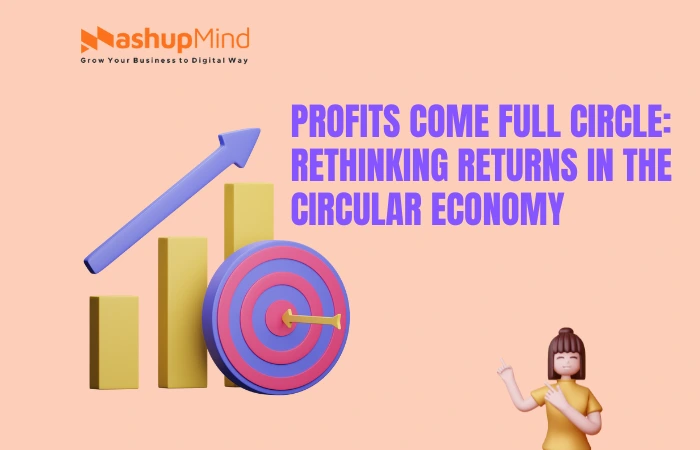Lasting work-life balance isn’t about rigidly splitting hours between job and home – it’s about designing a lifestyle where professional demands and personal well-being coexist sustainably. Effective approaches include setting clear boundaries, managing energy – not just time – and embedding routines that protect mental health. In 2025, with evolving work models and rising burnout rates, the focus has shifted from “doing it all” to “doing what matters well.” These work-life balance strategies prioritize consistency over intensity, helping professionals stay productive without sacrificing long-term health or relationships.
For many Canadian professionals, the line between work and personal life has blurred beyond recognition. Whether you’re leading a team remotely from Nova Scotia, managing client calls between school pickups in Saskatchewan, or running a small business from your basement in British Columbia, the pressure to be “always on” is real – and exhausting. Yet true success isn’t measured by how many hours you log, but by how fulfilled and energized you feel while doing it.
The most resilient professionals aren’t those who grind the hardest – they’re the ones who build systems that support both performance and peace. This mindset shift is at the heart of modern approaches to sustainable growth, whether in business or personal life. For example, companies that implement structured workflows like GrowME Marketing often see better results with less burnout, proving that clarity and consistency outperform chaos every time.
In this article, we’ll explore practical, evidence-backed methods to help you reclaim control. From realistic tips for better work-life balance to actionable guidance on how to maintain work-life balance amid shifting priorities, you’ll find strategies that adapt to your life – not the other way around. And as we look ahead to work-life balance in 2025, one thing is clear: the future belongs to those who design their days with intention, not just urgency.
Proven Strategies for Long-Term Work-Life Harmony
If fleeting fixes don’t work, what does? The answer lies in systems that align with how you actually live and work – not how you wish you could. Lasting work-life balance strategies are built on consistency, self-awareness, and small, repeatable actions that compound over time. Below are four evidence-backed approaches that professionals across Canada are using to create sustainable harmony in 2025.
Time-Blocking vs. Task-Stacking
Many people default to task-stacking – tackling items as they come in or based on urgency. While this feels responsive, it often leads to reactive workdays and mental fatigue.
Time-blocking flips the script: you assign specific blocks of time to categories of work (e.g., “deep work,” “client calls,” “admin”) in advance. This method reduces decision fatigue and protects focus.
When to use which:
- Time-blocking: Ideal for knowledge workers, creatives, or anyone with control over their schedule.
- Task-stacking: May suit roles with high unpredictability (e.g., customer support, emergency response) – but should be paired with buffer zones to prevent burnout.
Try this: Block 90-minute focus sessions for high-value work, and limit email or messaging to two 30-minute windows per day.
The Role of Digital Boundaries
Digital overload is one of the biggest threats to maintaining work-life balance in today’s always-connected world. The solution isn’t deleting apps – it’s designing intentional boundaries.
Start with these healthy work life balance tips:
- Turn off non-essential notifications (yes, even Slack and Teams).
- Use “Do Not Disturb” modes during focus blocks and after work hours.
- Set auto-replies outside core hours: “I’ll respond during business hours: 8:30 a.m.–5:00 p.m. MT.”
- Keep work apps off your personal phone – or use a separate profile.
These small acts signal to your brain (and your colleagues) that rest is non-negotiable.
Read: 5 Low-Cost Perks That Boost Marketing Team Output
Energy Management Over Time Management
Time is finite, but energy is renewable – if you manage it wisely. Instead of asking, “What can I fit into my day?” ask, “When am I at my best?”
Track your energy for three days:
- Are you sharpest at 7 a.m. or 2 p.m.?
- When do you naturally feel sluggish?
Then align tasks accordingly:
- Peak energy: Strategic thinking, writing, complex problem-solving
- Low energy: Admin, meetings, routine emails
This shift – from managing minutes to managing vitality – is one of the most powerful tips for better work-life balance that professionals overlook.
Building Supportive Daily Routines
Sustainable balance isn’t created in grand gestures – it’s woven into daily micro-habits. A strong routine acts as guardrails, especially during high-pressure weeks.
Consider integrating:
- Morning anchor: 10 minutes of movement, sunlight, or journaling before checking email
- Midday reset: A 15-minute walk (no phone) to break up screen time
- Evening closure ritual: Review wins, plan tomorrow’s top 3 priorities, then shut down work devices
These rituals create psychological separation between “work you” and “whole you” – a critical skill in work-life balance in 2025.
Short-Term Fixes vs. Sustainable Systems
| Approach | Short-Term Fix | Sustainable System |
| Work Hours | “Work late tonight, sleep in tomorrow.” | Fixed start/end times + 30-min buffer zones |
| Email Management | Check constantly | Batch processing twice daily |
| Breaks | Skip until exhausted | Scheduled micro-breaks every 90 minutes |
| Self-Care | Spa day once a month | Daily 15-minute movement or mindfulness |
Real-World Applications: What Lasting Balance Looks Like
Theory is helpful – but real change happens when strategies meet reality. Across Canada, professionals are quietly redefining what sustainable work-life integration looks like, not through dramatic overhauls, but through thoughtful, consistent adjustments. These aren’t “perfect” stories; they’re practical examples of how to maintain work-life balance amid real constraints.
Take a project manager in Ottawa who once averaged 60-hour weeks. Instead of quitting or burning out, she introduced two changes:
- She blocked 8:30–11:30 a.m. daily for deep work – no meetings, no email.
- She set an automatic Slack status after 6 p.m.: “Recharging for tomorrow – will reply at 8:30 a.m.”
Within three months, her team adapted, her overtime dropped by 60%, and project delivery quality improved. Her secret? She stopped equating presence with productivity.
In Halifax, a solo entrepreneur running an e-commerce brand faced constant weekend work creep. He implemented a “Friday shutdown ritual”:
- Processed all orders by 3 p.m.
- Scheduled social posts for the week
- Physically closed his laptop and placed it in a drawer
Sundays became screen-free. Not only did his stress levels fall, but customer satisfaction rose – because he returned on Mondays refreshed and more responsive.
These aren’t outliers. They reflect a broader shift in work-life balance in 2025: professionals are designing boundaries that protect their energy, not just their time. And it’s not limited to individuals – teams are getting involved too.
Some Canadian tech startups now enforce “core collaboration hours” (e.g., 10 a.m.–3 p.m.) and leave the rest for focused, asynchronous work. Others have adopted “no-meeting Wednesdays,” giving employees a full day to catch up, create, or simply breathe. The result? Higher retention, fewer sick days, and more innovation.
For those seeking healthy work-life balance tips, tools can help – but only when aligned with intention. Many Canadians use:
- Calendly to prevent meeting sprawl
- Focusmate for accountability during work blocks
- Notion or Google Keep to offload mental clutter
But the tool isn’t the solution – the system is. Whether you’re a teacher in Winnipeg, a consultant in Vancouver, or a remote developer in PEI, lasting balance comes from asking: “What rhythms help me show up fully – at work and at home?”
And that’s where the most effective work-life balance strategies begin – not with more hours, but with better design.
Final Thoughts: Making Balance a Lifestyle, Not a Goal
Work-life balance isn’t something you “achieve” and then check off your list. It’s not a finish line – it’s a daily practice, much like fitness or financial health. The most grounded professionals don’t wait for the perfect schedule or the ideal workload to feel balanced. Instead, they make small, consistent choices that protect their well-being while still honoring their ambitions.







